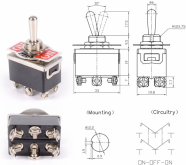Hi All,
I have a 48v LIfePO4 480AH bank in my RV. I have a 48v to 12v step down converter. I left the house 12V battery alone, connected to the alternator and such. At this point I've got two completely different systems. I was wanting to use my car radio off of the 48v->12v system as to not tax my starter battery. I installed a 2-way switch under the car console so I can switch between using the legacy house accessory battery vs the 48v->12v battery.
Here is my question>
Can both the 48v->12v and the 12v native battery share a common negative? I ask because today I just got done hooking up my side cameras and still finishing up the system. I had some of those negative cables pretty loose, but the thing caught fire as I was going down the road! I'm not sure if it was due to a short from some other wire that had tape on it and came uncovered and caused a ark or not. I am suspecting that. However I'm going through all the wires and redoing all of the connections without any tape and making sure its all solid, and now I'm nervous about them sharing the same negative as the cause. It was the negative wire that seemed to be the source of the fire, but I can't be sure. The negative wire was shoddily connected in a temp fashion with probably a high resistance.
I have a 48v LIfePO4 480AH bank in my RV. I have a 48v to 12v step down converter. I left the house 12V battery alone, connected to the alternator and such. At this point I've got two completely different systems. I was wanting to use my car radio off of the 48v->12v system as to not tax my starter battery. I installed a 2-way switch under the car console so I can switch between using the legacy house accessory battery vs the 48v->12v battery.
Here is my question>
Can both the 48v->12v and the 12v native battery share a common negative? I ask because today I just got done hooking up my side cameras and still finishing up the system. I had some of those negative cables pretty loose, but the thing caught fire as I was going down the road! I'm not sure if it was due to a short from some other wire that had tape on it and came uncovered and caused a ark or not. I am suspecting that. However I'm going through all the wires and redoing all of the connections without any tape and making sure its all solid, and now I'm nervous about them sharing the same negative as the cause. It was the negative wire that seemed to be the source of the fire, but I can't be sure. The negative wire was shoddily connected in a temp fashion with probably a high resistance.





